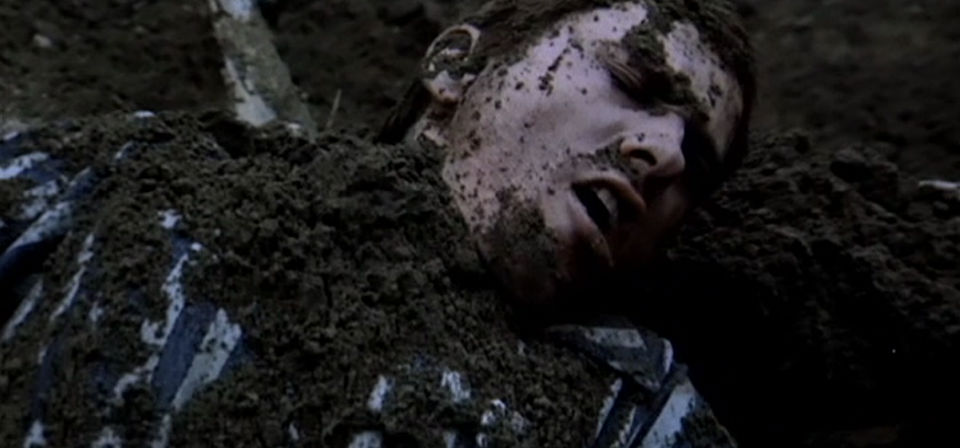A haunting film about the “martyr of Auschwitz”
Life for Life: Maximilian Kolbe comes to DVD
Nearly two decades before his Oscar-winning role as a Jew-hunting Nazi in Quentin Tarantino’s lurid WWII fantasy Inglourious Basterds, Christoph Waltz played an Auschwitz survivor whose escape is linked to the death of one of Auschwitz’s most celebrated victims, St. Maximilian Kolbe.
Too many movies about saints are pious, unremarkable works of hagiography, as many Catholic cinephiles are aware. The 1991 Polish film Life for Life: Maximilian Kolbe, newly available on DVD from Ignatius Press, is a welcome exception to the rule.
Co-written and directed by Krzysztof Zanussi (From a Far Country), Life for Life avoids the structure of a biopic, taking a nonlinear approach to its portrait of the beloved Franciscan “martyr of Auschwitz,” who famously volunteered to die in the place of one of ten prisoners randomly sentenced to execution in retribution for an escape.
In this telling, the escapee, Jan Tytz (Waltz), is aided in evading Nazi authorities by Kolbe’s fellow Franciscans, who are understandably interested in the circumstances around Kolbe’s death. Using Jan as a foil, the film reconstructs the saint’s life in flashback, mostly from the perspective of individuals touched in one way or another by Kolbe (Polish actor Edward Żentara).
In the process, Life for Life explores ambiguities around the seemingly straightforward story of Kolbe’s life, death and veneration. Why would someone sacrifice himself to save a stranger? Was it heroism or a form of suicide? Does veneration of Kolbe serve as a moral example of selflessness to the world, or is it merely a feather in the cap of his fellow Franciscans, the Church in Poland and the larger Catholic world?
Where most saint movies are intended to express and inspire devotion, Life for Life explores the nature and meaning of devotion to the saints, of hagiography itself. Its subject is ultimately not Kolbe himself, but how Kolbe’s life serves as an inspiration to some and an obstacle to others.
As Kolbe, Żentara projects intelligence and a sense of internal peace rooted more in discipline than temperament, particularly in a tense confrontation with a Nazi detail visiting the monastery Kolbe founded — a confrontation ending with his arrest. Waltz gives a haunted performance as Jan, the survivor who can’t escape Kolbe wherever he goes. Except for the opening escape, the film’s rhythms are contemplative, with complex tracking shots and precise camera movements lending visual drama to an otherwise talky, cerebral film.
A Polish–German co-production, Life for Life was ironically occasioned in part by a convergence of German interest in Kolbe and Polish government backlash against him following his 1982 canonization by Saint John Paul II.
By his own admission not personally attracted to Kolbe and not interested in making a film about him, Zanussi changed his mind when a German film company pitched the project to him. Struck by the irony of German filmmakers wanting to honor this son of Poland at the very moment Polish Communists were criticizing him, Zanussi felt it would be unpatriotic not to take the Germans up on their offer.
Life for Life is in Polish, with newly translated English and Spanish subtitles. Full disclosure: I wrote the main essay for the 16-page companion booklet, which also includes color photos of the film, short essays by Fr. Stanisław M. Piętka and Polish senator Marek Trzciński, a timeline of key dates in Kolbe’s life and a short list of discussion questions.
Related

Life for Life: Maximilian Kolbe, martyr of Auschwitz (1991)
Two great mysteries hover over the cardinal moment in St. Maximilian Kolbe’s life, a quiet exchange of words with the deputy camp commander at Auschwitz-Birkenau heard by few and lasting probably less than a minute.
Recent
- Benoit Blanc goes to church: Mysteries and faith in Wake Up Dead Man
- Are there too many Jesus movies?
- Antidote to the digital revolution: Carlo Acutis: Roadmap to Reality
- “Not I, But God”: Interview with Carlo Acutis: Roadmap to Reality director Tim Moriarty
- Gunn’s Superman is silly and sincere, and that’s good. It could be smarter.
Home Video
Copyright © 2000– Steven D. Greydanus. All rights reserved.